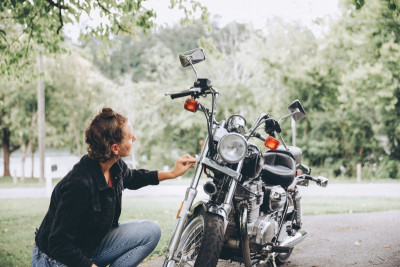Before hopping on that bike to go for a nice ride, it is always valuable to make sure your motorcycle is ready for the road in a safe manner. Not only can doing your own maintenance keep you safe but it can also help your pocketbook. Here are some tips and suggestions of key points to make sure you are keeping your motorcycle in pristine condition for your safety and for the safety of those around you.
Research Your Motorcycle
First things first, you will want to do some digging and learn about your motorcycle. Understanding your bike by brand and type will help determine what you need and how to maintain your bike. Here are some great resources to check out:
YouTube: This is a great place to learn about your bike and how to fix it. Chances are someone else has had a similar repair or issue with their bike. They can show you step by step how to repair it! Great keywords to search for are looking up your bike specifically or just searching for motorcycle maintenance for some general knowledge.
Motorcycle Forums: This is a community for owners and enthusiasts to discuss their love of bikes. This can be a place to chat about performance, troubleshooting, maintenance, modifying, and more.
Factory Service Manuals: These manuals are step-by-step instructions along with illustrations to give you a visual guide to make your job easier. These may cost you a pretty penny but are worth it to have on hand. You can find manuals at your local auto parts store or online.
Being safe also means knowing you will be covered if something were to happen. Check out what insurance coverage is available. Now that you have your resources and have gained more knowledge about your bike, it is time to see what routine maintenance should happen.
Routine Maintenance
So now it is time to roll your sleeves up and get to work on your bike. Remember to check your owner’s manual to make sure you understand where everything is located on your bike before beginning. Here are five key routine check-ups:
Chain - Make sure they are looped and adjusted properly. This can vary depending on your bike. Check your manual. You also want to keep it clean and lubed.
Oil - Do regularly scheduled oil changes based on your manual. Make sure to do oil changes while the engine is cold and the bike is standing upright.
Brakes - Always check before each ride to make sure pads are fresh. The last thing you want is for them to give out on you while you are out on a ride. Check the hoses and make sure they are firm and fresh with no cracks in them.
Tires - Do a visual inspection for no holes or screws. When it comes to your tread, the center will wear down the most, so check your tread there by using a penny. Turn a penny upside down so Lincoln’s head points down into the tread. If you can see his entire head, it may be time to replace. Your tire pressure should be noted on the sidewall of the tire. You can use an air compressor to inflate to the correct number of pounds per square inch (PSI). Make sure not to over inflate.
Lights - Check that your headlights, turn signals and taillights are working. If they aren’t, it’s time to replace them. Other drivers need to be able to see you at night and be aware of your turn signals.

Preparation for Winter Storage
For those who can’t ride all year long due to the weather, it’s important to prep your bike for the winter long hibernation. Make sure to store your bike somewhere dry and out of the elements to keep it protected during the cold months. Changing your oil is important even when storing your bike. You want your engine as clean as possible during this time.
To avoid rust, fill up with a fresh tank of gas and add a fuel stabilizer to keep the fuel from breaking down over time. Clean all exterior surfaces of your bike. If you wait until your first ride of the warm season, any dried debris, dust or even bugs will be a pain to remove. Although there may be many other tips for winter storage, our final suggestion is to remove the battery and hook it up to a battery tender. For the best result, store your battery with the tender somewhere that the temperature doesn’t fluctuate.